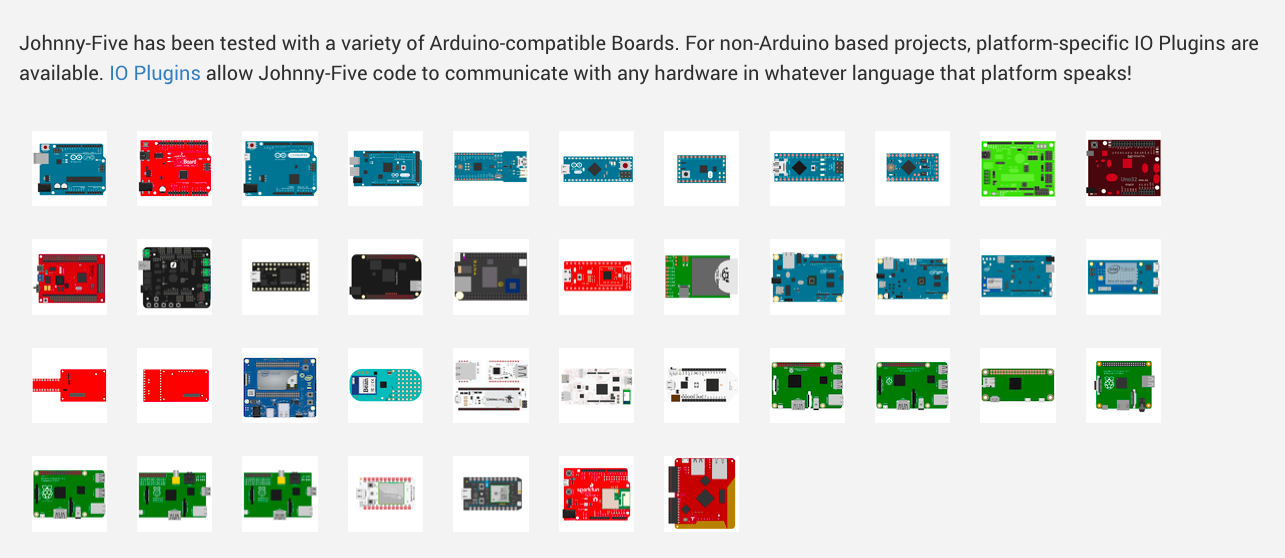The NodeBots universe is huge and expanding everyday! In fact, we've only really started exploring the world of Johnny-Five.
The Raspberry Pi we used in this book is just one of over 40 boards supported by Johnny-Five. Just a peek at the platform support page of the Johnny-Five website makes this clear:

The best news is that the code you've written in this book can be transferred to most of the boards pictured here. There are only two steps to porting your code: changing the pin numbers and making sure the board you are switching to offers the functionality you need.
Changing pin numbers means you need to know what pins on your new board complete which tasks. For instance, if you were moving your I2C LCD from the Pi to the Arduino Uno, you'd need to know where the SDA and SCL pins are located on the Uno.
The best way to get this information is to search the internet for [board name] pinout, and searching...



